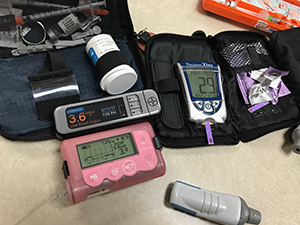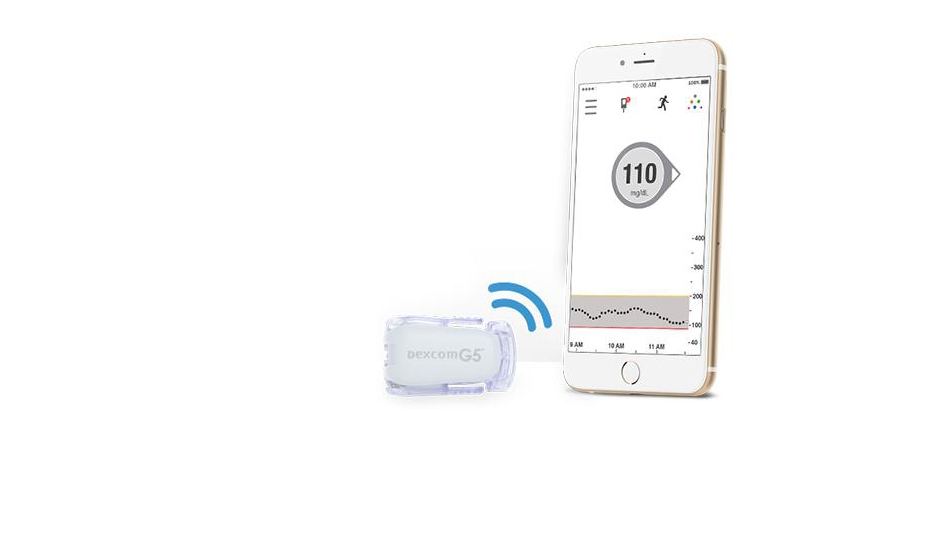Ketones and Exercise – What You Need to Know
Ketones develop when we burn fat as fuel. In type 1 diabetes, ketone levels can rise even without starvation, if insulin levels drop too low

In a new set of guidelines for Type 1 diabetes and exercise, I and my fellow researchers warn that people with Type 1 diabetes need to monitor for elevated levels of ketones during exercise. If you have Type 1 and exercise regularly, testing for ketones could save your life.
Ketones develop in our bodies when we mobilize fat as fuel. Fat is an important energy source that is used by the body at rest and during exercise. Ketones are a general term in medicine used to describe the three main ketone bodies that the liver produces – acetoacetate, beta-hydroxybutyrate, and acetone.
Read “Too Many with Type 1 Don’t Test for Ketones.”
Ketone bodies help fuel the brain and skeletal muscle during times of prolonged fasting or starvation, so in a way ketones are very important for survival. We actually have enough stored fat to generate energy for days, but this can cause a number of metabolic problems, the most important of which is ketoacidosis.
In Type 1 diabetes, ketone levels can rise even without starvation, if insulin levels drop too much and levels of other hormones like glucagon and catecholamines rise. This rise in ketone levels in diabetes can cause a life-threatening condition called diabetic ketoacidosis (DKA).
Read “How DKA Happens and What to Do About it.”
The symptoms of ketoacidosis include:
- A lack of energy, weakness, and fatigue
- Nausea and vomiting, stomach pain, decreased appetite
- Rapid weight loss
- Decreased perspiration, foul or fruity breath
- Altered consciousness, mild disorientation or confusion
- Coma
Missed insulin injections — the reasons for developing high ketone levels in Type 1 diabetes include:
- Failure of insulin pump (mechanical)
- Bad insulin (e.g. expired, previously frozen, exposed to very high temperatures, etc.)
- Loss of insulin flow in an insulin pump infusion set or bent cannula
- A ketogenic diet (low carbohydrate) with low total daily insulin dose
- Prolonged vigorous exercise in a setting of very low insulin levels
Exercise has long been known to increase ketone production, even in people without diabetes. Increases in fat mobilization and increased blood flow to the liver during exercise promotes increased fat uptake to the liver and the conversion of fat first to acetyl-CoA and then to the ketone body acetoacetate. Acetoacetate can then convert to the two other ketone bodies – acetone and beta-hydroxybutyrate. These ketone bodies then leave the liver and can be used by muscle as energy.
However, if insulin levels are too low, the production of ketones becomes greater than their rate of metabolism, and ketone levels will gradually rise in the circulation. If levels get too high, then the exercising person may begin to feel nauseous, disoriented, confused, or weak; they also may not have any symptoms at all.
Very prolonged exercise, like mountain trekking and marathons, may increase ketones to dangerous levels in people with Type 1 diabetes, and this increase in ketone levels may not be associated with high blood sugar. This is because the skeletal muscle can utilize blood sugar as a fuel even when insulin levels are very low. Low insulin, prolonged exercise, and stress hormones can all cause ketones levels to creep up to dangerous levels.

(photo courtesy of Chris Jarvis)
Secondary diabetes medications also might up the risk of high ketone levels during exercise. Some new medications, like SGLT2 antagonists, may increase ketone production if they are taken by people with Type 1 diabetes. This may be because this new class of medications drops insulin needs to very low levels and may increase glucagon levels. One of the major problems is that a person with Type 1 diabetes could be ketotic when taking this medication even though their blood glucose concentration is in the normal or only slightly elevated range.
New guidelines published in Lancet Diabetes & Endocrinology recommend not beginning exercise if ketones are elevated and treating elevated ketone levels with insulin and carbohydrates if necessary before exercise begins. This means that it is always wise to monitor both blood sugar and ketone levels before and after exercise.
Ketone testing can be performed in a blood sample with a ketone meter and ketone strip, or ketone levels can be measured in a urine dipstick. Measuring in the blood is best since this can reveal the ketone levels at the time of measurement, whereas urine-based testing actually measures what the ketone levels may have been a few hours ago.
While it’s hard to envision adding yet more testing to your daily routine, ketone testing is important to ensure you stay active and out of the hospital.







